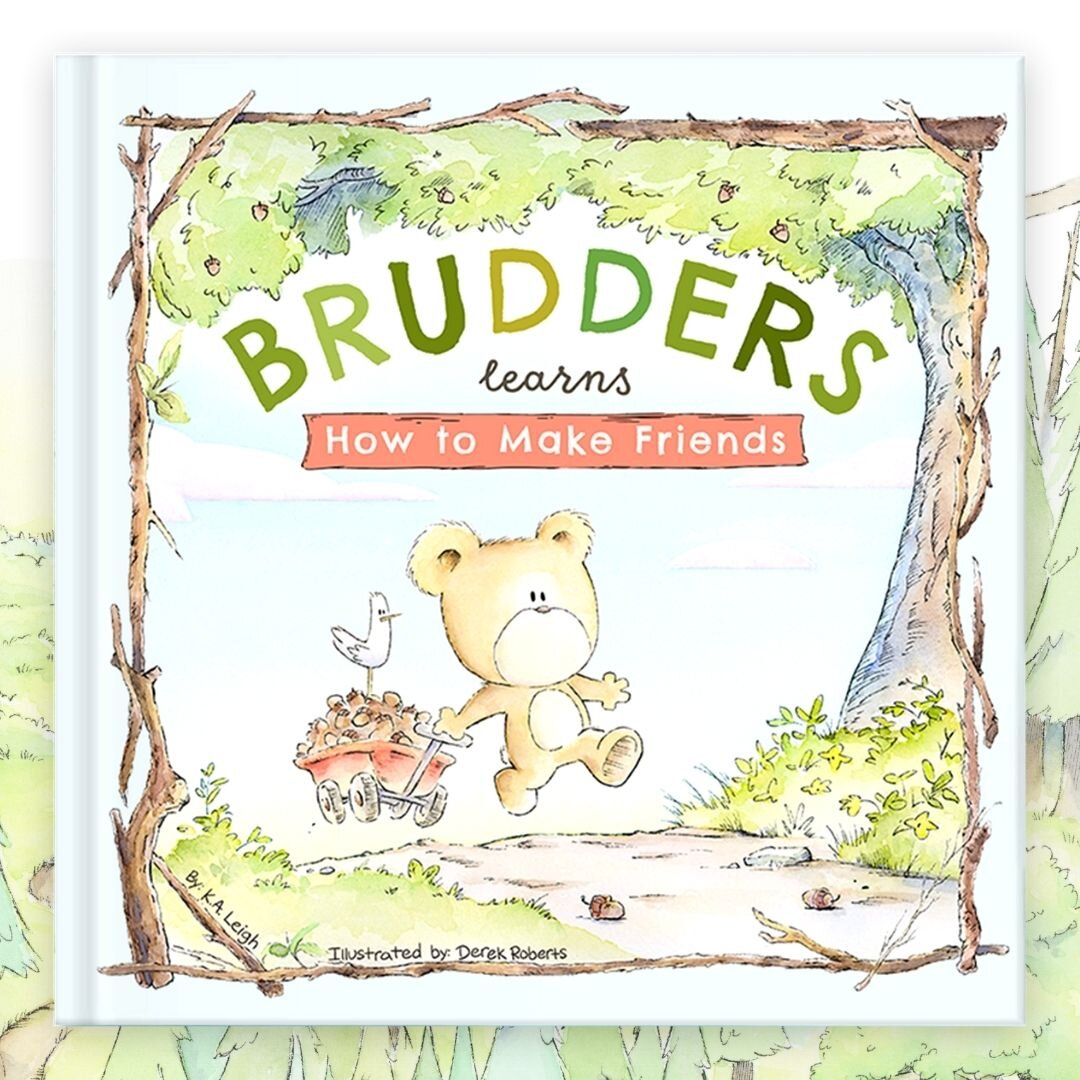Starting Fresh - 6 Strategies to Help Preschoolers Build Friendships This School Year
Starting school can be a mix of excitement and anxiety for both children and parents. As the first school day approaches, one of the greatest challenges for young kids is making new friends. In this post, we’ll dive into how Brudders the bear’s friendship journey can be a great tool for easing your child’s transition into preschool and helping them build friendships. We’ll share tips and strategies inspired by Brudders the bear’s experiences, offering practical advice on supporting your little ones as they embark on a friendship-building adventure.
The book, Brudders Learns How to Make Friends
Strategies for Making Friends in Preschool:
#1 Practice Social Skills with Children in an Engaging and Memorable Way
Wouldn’t it be magical if we could snap our fingers and help our youngest kiddos master social skills? Fortunately, with great modeling and favorite characters, we can help preschoolers develop communication skills to learn how to interact with others, share, and recognize social cues.
Using Brudders books and incorporating Brudders as a puppet to act out scenarios, conflicts, or positive examples is a great way to guide children through emotional situations. Invite our Brudders stuffed bear along during moments of social challenge to help your kids practice interaction and feel even more love!
#2 Spotlight Individual Differences
Children have different interests and dispositions, which can make it challenging to find common ground. For instance, one child might love playing with play dough while another prefers playing with loud wooden blocks, which can make it challenging to work together.
In the story, Brudders Learns How to Make Friends, Brudders discovers that all the animals are very different indeed. The deer ran away and were startled by his loud shouts. The fish were frightened of his loud splash into the water. The bees were protective of their hive as their home. Once Brudders learned more about the forest friends and their needs, the path to friendship was much easier and more fulfilling.
Encourage children to share their interests and practice voicing their needs. This creates connections as they find their shared interests and even find ways to bond through their differences.
From the book, Brudders Learns How to Make Friends
#3 Provide Opportunities for Unstructured Play
Allow time for play without structure so that children can explore and interact with peers on their own terms. As they encounter various play situations, children learn to navigate and manage their emotions and frustrations. Plus, they develop empathy by understanding and relating to the emotions and needs of other children.
This creative play time often results in preschoolers inventing their own games, scenarios, and stories, which stimulates imagination and self-expression. Children love playing with other children in this free play time and engaging with their silly and imaginative ideas, which then creates a friendship bond.
#4 Engage and Model Healthy Communication at Home
Brudders believed that he wasn’t liked after his attempt at making friends went awry. Zeke, the wise bird who is always watching over Brudders, taught Brudders that his method of communicating wasn’t fitting the needs of the other animals. Young children might struggle with expressing themselves or understanding others' feelings, which can make it difficult to connect with peers.
From the book, Brudders Learns How to Make Friends
An important strategy to help guide preschoolers through better communication is to role-play scenarios or coach them by saying what they feel. Conversations about tone, respect, and kindness build up their communication muscles and set them up for success in future situations. Give them examples of ways to ask for what they need such as, “ May I please have a turn with that toy when you are done?” or “Will you please play blocks with me?”
Using simple and concise language, creating consistency and routines, and upholding a positive and patient environment help preschoolers develop better communication.
#5 Manage Separation Anxiety with Patience and Love
Being away from parents and adjusting to a new environment can make some children more hesitant to engage with others. Some heartwarming techniques to help combat anxiety include allowing the child to bring a photo of their family with them, a special shared item like a bracelet or a necklace, or a special shared phrase.
#6 Show Patience and Support
Making friends in the early years can be quite a process. Building friendships takes time and may involve some setbacks along the way. As parents and teachers, we can support their emotional needs with kindness and coaching, while encouraging them to be patient and consider how the other child is feeling too. The more empathy we can promote in the early years, the easier friendships will be down the road.
From understanding their social needs to fostering skills that encourage interaction, we hope that the Brudders books provide you with relatable experiences and tips to help your child thrive in their new social world. In our other Brudders books, Brudders learns the simple pleasures of saying thank you and the magic of confidence. Grab our whole magical bundle of books, which includes our snuggly bear for even more social development in preschool and beyond.
Be on the lookout for our other posts about confidence and manners in the coming weeks!
Get free shipping on orders over $50 with code FREESHIP.







